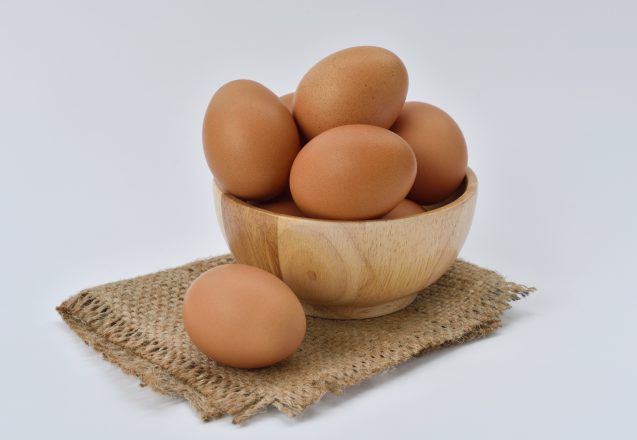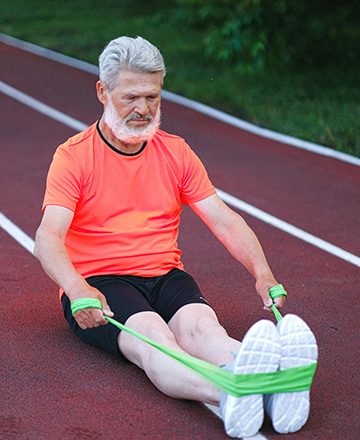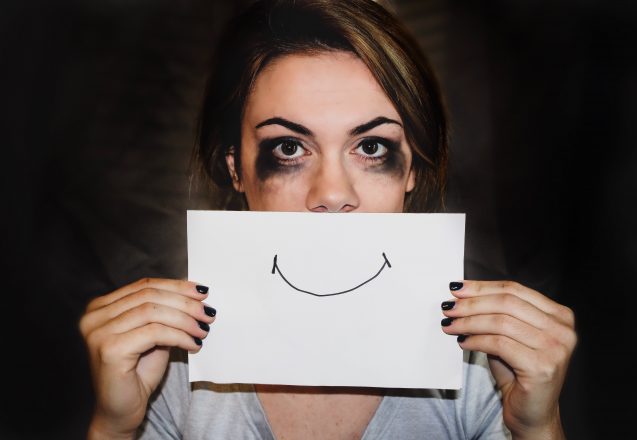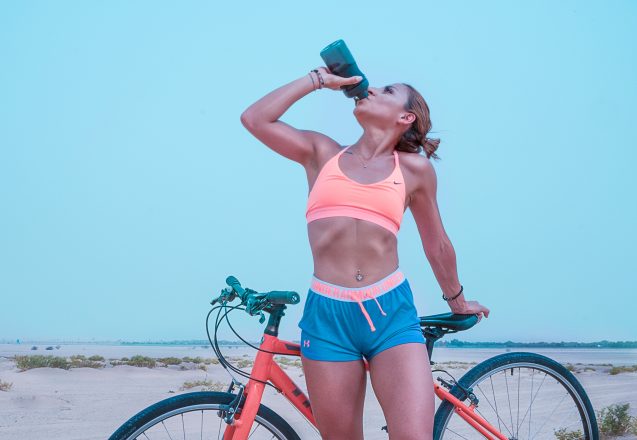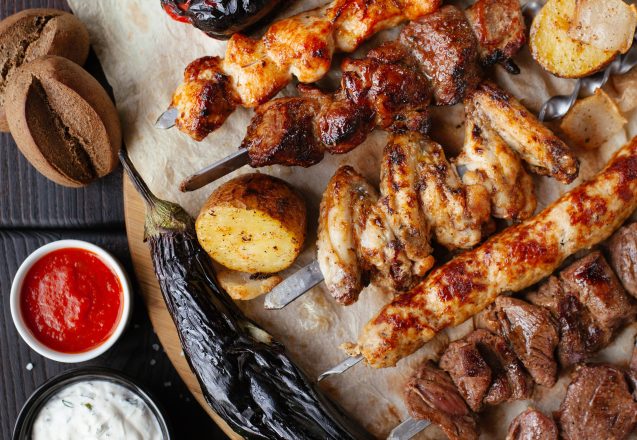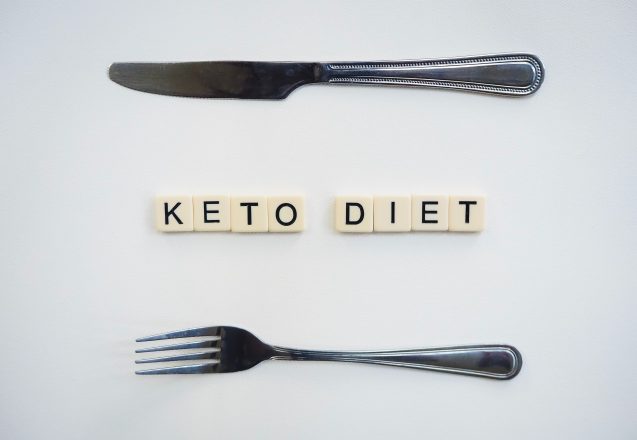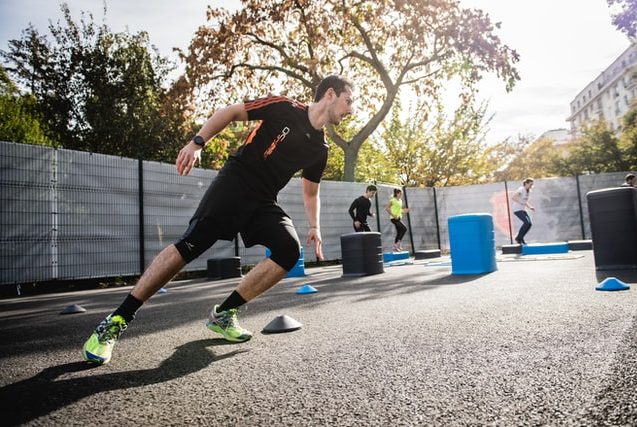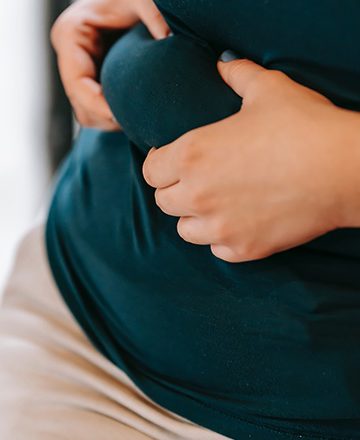Best Gluten Free Foods For Dieting
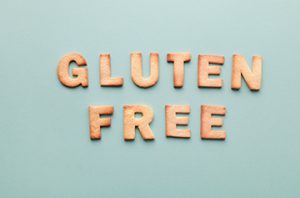 Isn’t it amazing how science finds something new and suddenly it’s all the rage? For instance, when doctors finally realized that some people had issues with gluten, gluten-free options became the latest craze. Unfortunately, even though advertisers equate gluten-free with healthy, that’s not necessarily true. Many gluten free foods are actually loaded with calories, since brown rice flour, corn starch and other ingredients are used to give the texture of gluten. If you’re trying to lose weight, it may do just the opposite unless you chose carefully. Here are some gluten free foods for dieting that will help you reach your goal.
Isn’t it amazing how science finds something new and suddenly it’s all the rage? For instance, when doctors finally realized that some people had issues with gluten, gluten-free options became the latest craze. Unfortunately, even though advertisers equate gluten-free with healthy, that’s not necessarily true. Many gluten free foods are actually loaded with calories, since brown rice flour, corn starch and other ingredients are used to give the texture of gluten. If you’re trying to lose weight, it may do just the opposite unless you chose carefully. Here are some gluten free foods for dieting that will help you reach your goal.
Look for snacks that are low in sugar and other additives.
Snack bars and other snacks made with ancient grains are healthy. In fact, there’s one that blends nuts, quinoa, flax seed, hemp seed and amaranth with vanilla goodness. It’s packed with protein and good for the heart. Other snacks that don’t have gluten are often made with fruit or fruit juice, using natural flavors and sugars of the fruit for sweetness.
The same rules are still in place, even if it’s gluten free.
If it’s high in calories, it’s probably not your best weight loss choice. One of the biggest problems that gluten free foods have is that they’re trying to mimic the taste of food with gluten. It’s similar to the problem manufacturers had when they removed fat. The food didn’t have the texture or the taste of food with fat. In both cases, to solve the problem, they added sugar and other not-so-healthy options. In the case of gluten free, it’s sometimes extra salt and fat. Go for foods that are naturally gluten free and don’t require extra processing. Choose options like veggies and hummus or popcorn for snacks. Opt for quinoa that’s naturally gluten free.
We offer meal plans that are designed for weight loss and are gluten free.
You won’t have to guess at whether it’s high in calories or gluten free, our meal plans are made specifically for your needs. Whether you want a vegetarian diet, gluten free, lactose intolerant or low carb, we offer meal plans designed specifically for you to help reach your fitness goals. We also have heart healthy plans, wheat sensitivity, Mediterranean and more. That makes it a perfect choice for anyone who has special needs and wants recipes that won’t pack on the pounds.
- Instead of making sandwiches with bread, of any kind, make a lettuce wrap. Not only is the wrap gluten free, it’s super low in calories and tastes delicious.
- Quinoa is often overlooked as a substitute for grains, yet it’s not only an excellent substitute, it’s also high in protein and can be a great meatless Monday meal.
- How could you miss gluten when you have options like chipotle pepper-lime shrimp bake with potatoes? It includes broccolini, asparagus with chipotle pepper, cilantro and lime adding the spice. All these ingredients are naturally gluten free.
- Peanut butter and apples are naturally gluten free and can be a delicious snack. Once you opt for more whole foods, you’ll realize that you have many options that are both gluten free and low in calories.
For more information, contact us today at LIV Fitness!
How Much Protein In An Egg?
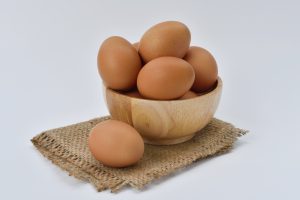 It’s no secret, prices at the grocery are rising, so finding ways to save money without compromising quality can be important. You don’t have to be on a limited budget to appreciate that. Some people are opting for meatless Monday’s and while that normally means beans or plant based protein sources, it can also mean choosing an egg as a source of protein. There’s a lot of protein in an egg, and unlike many plant proteins, it’s a complete protein.
It’s no secret, prices at the grocery are rising, so finding ways to save money without compromising quality can be important. You don’t have to be on a limited budget to appreciate that. Some people are opting for meatless Monday’s and while that normally means beans or plant based protein sources, it can also mean choosing an egg as a source of protein. There’s a lot of protein in an egg, and unlike many plant proteins, it’s a complete protein.
How much protein do you need every day and how do eggs fill that requirement.
Everything is based on size, including the number of grams of protein needed and the amount an egg contains. The average person requires about 0.36 grams of protein per pound. That will vary based on activity level, age and other factors, but for a person weighing 150 pounds who is sedentary, that means he or she needs approximately 54 grams. How much protein is in an egg? That too depends on the size. Small eggs have about 4.79 grams, while large eggs have 6.3 grams and jumbo eggs have 7.94 grams. Two jumbo eggs could offer about a third of the protein necessary for a 150 pound sedentary person.
Are you only eating egg whites?
Some people skip the yolks and consume only the whites, since most of the fat is in the yolk. However, so do most of the nutrients and about half the grams of protein. A large egg has approximately 6.3 grams of protein with 3.6 of it coming from the white and 2.7 coming from the yolk, so the whites have just a small amount more protein.
Eggs offer other nutrients besides protein.
This food was created to be nutritious and provide all the nutrients necessary for growth. A large egg contains approximately 71 calories but is loaded with nutrition. It has choline that’s necessary for metabolism and is a brain building nutrient, folate, iron, vitamins A, B12, D, E, lutein, selenium, zeaxanthin and of course, protein.
- Eating eggs can reduce the risk of cardiovascular disease and stroke. It’s also beneficial for anyone who is trying to lose weight, which lowers the risk of several serious conditions, including diabetes.
- Because eggs have healthy fat and protein, they can leave you feeling fuller longer. Starting your day with eggs can help you overcome the mid-morning munchies that take you down a path toward donuts and sweet treats.
- Other foods that are good sources of protein include kidney beans, black beans, chickpeas and lentils. Make a kidney bean salad and add hard boiled eggs to increase the protein availability.
- Even though eggs are high in cholesterol, it doesn’t mean it will raise the cholesterol in the blood. In fact, if you’re eating foods high in cholesterol, your liver makes less cholesterol to keep the amount level.
For more information, contact us today at LIV Fitness!
Staying Fit As You Age
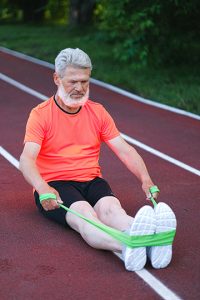 One of the problems associated with staying fit as you age is the nature of aging. Your body produces fewer hormones, such as testosterone, which makes building muscle easier. Menopausal women tend to have hormonal changes that can cause abdominal fat accumulation. Sarcopenia—age related muscle loss—has another effect on the body. It can affect your metabolism. The more muscle you have, the more calories you burn, since muscle tissue requires more calories than fat tissue does. A slower metabolism can mean you gain weight easier. Even protein processing, necessary for building muscle, is more inefficient.
One of the problems associated with staying fit as you age is the nature of aging. Your body produces fewer hormones, such as testosterone, which makes building muscle easier. Menopausal women tend to have hormonal changes that can cause abdominal fat accumulation. Sarcopenia—age related muscle loss—has another effect on the body. It can affect your metabolism. The more muscle you have, the more calories you burn, since muscle tissue requires more calories than fat tissue does. A slower metabolism can mean you gain weight easier. Even protein processing, necessary for building muscle, is more inefficient.
Now that all the bad news is out of the way, there’s also good news.
You can turn back the hands of time and slow aging. However, it’s not as easy to get into shape as it was when you were in your 20s, so the best advice is to stay fit by eating healthy and staying active. Sometimes even the best laid plans don’t work out, so if you’re trying to get back into shape, it’s still possible, no matter what your age. Strength training is extremely important in that effort. It helps build muscle mass that can reverse many of the signs of aging. The stronger you are, the better your quality of life.
Clear it with your health care professional first, then get started.
No matter what your age, you should always check with your health care professional before starting a new program of exercise, but it’s even more important the older you are. If you’ve been inactive most of your adult life, start slowly. You can start with something as simple as walking. Strength training doesn’t necessarily mean you have to lift heavy weights. Start with soup cans or two pound dumbbells. Don’t overdo. It may take longer to get fit this way, but you’ll stay healthier while you do.
Eat healthy.
If your normal dinner comes in a box or is wrapped in paper, you need to find ways to eat healthier for a longer life. Healthy eating doesn’t have to be fancy. It should include a wide variety of fruits and vegetables and healthy protein options. Fried foods, foods with added sugar and highly processed foods all add to the aging process. If you want to look your best, fill your plate with antioxidants and the anti-inflammatories of fresh fruits and vegetables. Make sure you have lean meat or other healthy protein and some healthy fat every day.
- If you’re working out at home and don’t have dumbbells, you can use soup cans or invest in inexpensive resistance bands. Just doing light lifting around the house or some of the heavier work in gardening can help keep you fit.
- Get plenty of sleep. Your body needs between seven and nine hours of sleep every night in order to function its best. Lack of sleep can cause an imbalance of hormones with an overproduction of the hunger hormone and an underproduction of ones that make you feel full.
- Find something active that you enjoy doing. If you’re not fit enough for long hikes, make a long hike your goal and work up to it. Most activities are not age related, but fitness related.
- Don’t forget flexibility training. Staying supple is a sign of youth and flexibility training can help you do it. Fitness training can put pep in your step and help you look and feel younger, no matter what your age.
For more information, contact us today at LIV Fitness 247
How Fitness Helps Your Mental Health
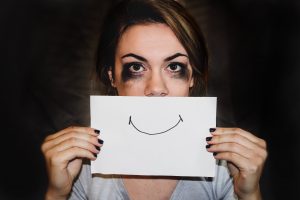 At least once a day, a client will say how good he or she feels after a workout at LIV Fitness in Dublin, CA. While it would be nice to say it only happens here, it wouldn’t be true. There are a number of reasons people feel renewed and relaxed after they workout, no matter where they workout. One of those is that fitness helps your mental health. It burns off the hormones of stress and replaces them with ones that make you feel at ease.
At least once a day, a client will say how good he or she feels after a workout at LIV Fitness in Dublin, CA. While it would be nice to say it only happens here, it wouldn’t be true. There are a number of reasons people feel renewed and relaxed after they workout, no matter where they workout. One of those is that fitness helps your mental health. It burns off the hormones of stress and replaces them with ones that make you feel at ease.
Therapists often use exercise as an adjuvant therapy.
Whether it’s called adjuvant, adjunct or complementary therapy, exercise is often recommended to help improve the outcome of mental health therapy. In fact, many studies show that it works as well as many medications, but doesn’t have the side effects medication has. Exercise helps boost the hormones that make you feel good and improves circulation to get nutrition and oxygen to all cells of the body, including the brain. Studies show moderate exercise is effective treatment for anxiety and depression when done three to four times a week.
You’ll improve your confidence and even look more confident.
Exercise improves your posture, which makes you look more confident. When you look more confident, people treat you as though you are more confident and you actually begin to feel that way. It’s the Pygmalion effect, also known as the self-fulfilling prophecy. Try this simple experiment. Stand in front of a mirror and slump. Do you look and feel defeated? Now stand up straight, head held high. Most people automatically smile a bit. It makes you feel and look stronger. Exercise helps improve your posture and by doing that, improves your mood.
You’ll sleep better when you exercise regularly.
Too many Americans are proud of the fact that they don’t get all the sleep they need to function their best. Lack of quality sleep can cause problems. It can disrupt the balance of hormones that make you feel full and the ones that make you feel hungry, by reducing the satiety hormones and boosting the hunger hormones. That’s not all lack of sleep does. It interferes with your brain functioning, so your thought processes aren’t nearly as fast or clear. Exercise improves the quantity and quality of sleep.
- You’ll boost your brain power, including your memory. Studies show that endurance training can help build new brain cells and improves memory. It’s one reason several scientific studies point to exercise for treatment of Alzheimer’s and dementia.
- Not only does working out improve circulation, but it also boosts the production of neurohormones which improve both cognitive functioning and mood.
- When you exercise, you build your strength. Feeling strong is important to your confidence and feeling of well-being. You feel more able to handle the problems you face, whether physical or mental.
- We’re open 24/7, so you can exercise when it’s convenient and when you need it. If you’ve had a high stress, mentally challenging day, working out, no matter what time it is, can help.
For more information, contact us today at LIV Fitness 247
How To Safely Workout In The Heat
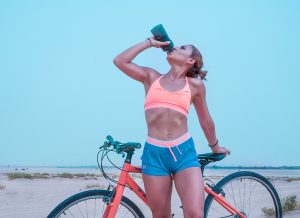 For most people it’s a no-brainer. If you want to safely workout in the heat, do your workout in an air-conditioned gym. But when the weather is warm and the sun is high in the sky, outside activities beckon you and those need to be done safely, too. While exposure to the sun a few days a week for up to 20 minutes is important for vitamin D production, more than that can lead to skin damage, which could lead to cancer. The first rule of safety is to apply sunscreen and the second is to avoid the midday sun.
For most people it’s a no-brainer. If you want to safely workout in the heat, do your workout in an air-conditioned gym. But when the weather is warm and the sun is high in the sky, outside activities beckon you and those need to be done safely, too. While exposure to the sun a few days a week for up to 20 minutes is important for vitamin D production, more than that can lead to skin damage, which could lead to cancer. The first rule of safety is to apply sunscreen and the second is to avoid the midday sun.
I can’t emphasize it enough, STAY HYDRATED!
If you insist on working out in the heat, keep a bottle of water with you at all times. It’s easy to get dehydrated from sweating. Do you hate water? Maybe it’s time for some infused water. If you’re doing a tough workout in the heat, a sports drink may be necessary to replenish your electrolytes. Know the signs of dehydration. If you’re feeling dizzy, have an increased heart rate or have a headache, you need to be alert to the possibility of dehydration. One sure way to determine the amount of fluid in your system is by the color of your urine. If it’s a dark straw color, you may have a problem. If it’s light yellow, almost clear, you’re still adequately hydrated.
Dress appropriately.
Make sure you wear clothing that breathes. It should be light-colored, light-weight and made of wicking material. Even if you hate how your legs look, shorts and a lightweight tank top that are looser-fitting should be part of your exercise gear for hot weather. It allows for circulation. Wear sunglasses that protect your eyes from UV rays if you’re out in the sun and sun-screen or sun-block. Sunglasses help protect your eyes. The UV rays can lead to eye disease, such as cancer or cataracts.
Don’t go directly from air conditioning to the heat and start working out.
You always need to warm up, bur on a hot day, it’s even more important. Start slowly and when you finish, cool down. If you normally workout in air conditioning and spend little time in the heat, take it easy. Let your body slowly acclimate to working out in the heat. Make your first few outside workouts shorter and build on the time spent outside. Finish your workouts inside air conditioning. As you acclimate, do more of your workout outside.
- If you’re exercising early in the morning or later at night, stay safe by wearing clothing that has reflective material. Make sure you let someone know your path if you’re running or run with a friend for safety.
- Check the weather forecast. It’s more than just the actual temperature, it’s the heat index, too. The heat index combines the humidity and temperature. If it’s above 80, you’re putting yourself at risk for a heat-related condition.
- High temperatures can cause more than just dehydration and associated heat cramps and heat exhaustion. It can cause heat stroke, which occurs when your temperature regulating system fails to work. It requires immediate first aid.
- If you still want to workout outsides when it’s hot, find a shady area to do that. Trees can bring down the temperature approximately 4 degrees. Exercising on asphalt or concrete actually intensifies the heat.
For more information, contact us today at LIV Fitness 247
Are Some Proteins Better Than Others?
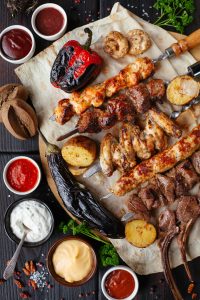 We’ll help you achieve your goals at LIV Fitness in Dublin, CA with both a program of nutrition and exercise. It doesn’t matter what your goal, eating healthy is important. That involves not only choosing the right balance of macronutrients, but also identifying which specific food within that group is better, such as finding the most digestible and best protein. You need more than just exercise to lose weight, build muscle or just be your healthiest.
We’ll help you achieve your goals at LIV Fitness in Dublin, CA with both a program of nutrition and exercise. It doesn’t matter what your goal, eating healthy is important. That involves not only choosing the right balance of macronutrients, but also identifying which specific food within that group is better, such as finding the most digestible and best protein. You need more than just exercise to lose weight, build muscle or just be your healthiest.
Protein is an important part of your diet.
While you’ll get help creating the right diet for your needs, every healthy diet needs to include protein. It’s important for building muscles, losing weight and is part of every cell in your body from your fingernails to your blood. It plays the role of messenger as a hormone, repairs tissue and builds cells. The body doesn’t store protein, like it does fat that’s burned later for energy. If you don’t have enough protein daily, your body suffers. Your affects your immune system, makes you tired, leaves you hungry and shows in the healthiness of your nails, hair and skin.
There twenty amino acids necessary to keep your body working at peak performance.
The body only can produce 11 of those and has to get the last nine from diet. Those are the nine essential amino acids. Not all protein sources contain those nine amino acids. Animal protein sources do. Not all sources are bioavailable, which is how well the body breaks down the protein and how much of it is absorbed. Again, animal sources are best. Topping the list is red meat from grass fed beef, poultry, wild-not farmed-salmon, wild game, whole eggs, dairy and whey.
Vegetarian sources are often less expensive and can be good options for protein.
While many plant protein sources aren’t complete and less bioavailable, they’re affordable and can be combined to create a complete protein. Beans are one example of a cheap protein source and can be stored in dried form for a long time. Combine the beans with brown rice and you have a complete protein source. With prices skyrocketing, having a meatless Monday sounds more and more enticing. You can also consider eggs as another cheap source of protein that’s excellent.
- If you’re trying to lose weight, you need protein in your diet. Protein fills you up and keeps you feeling full longer. It’s also necessary for building muscle tissue. The more muscle tissue you have, the more calories you burn.
- One complete vegetarian protein source is quinoa. It’s easy to combine with vegetables and other vegetarian protein sources, like lentils to build all the protein you need for the day.
- You can get healthy protein sources for snacking. Edamame, a soy product is a great snack and protein source. Yogurt, hard-boiled eggs and nuts or nut butter are also decent sources.
- Organ meats, like chicken livers are excellent protein sources and often less expensive. Canned tuna is another option that can be made into a quick salad for a high quality protein lunch or sandwich.
For more information, contact us today at LIV Fitness
What You Need To Know About The KETO Diet
 The KETO diet has become popular for a number of reasons. It lets you eat bacon, steak and seafood you want, which is the dream of most people trying to lose weight and it works. It’s not a new diet. It’s been used since the 1920s to help control seizures, but became popular with bodybuilders in the 1908s and made its way to the general public more recently. It elicits ketosis. That’s the process where the body converts fats to ketones for energy, rather than using glucose from carbs.
The KETO diet has become popular for a number of reasons. It lets you eat bacon, steak and seafood you want, which is the dream of most people trying to lose weight and it works. It’s not a new diet. It’s been used since the 1920s to help control seizures, but became popular with bodybuilders in the 1908s and made its way to the general public more recently. It elicits ketosis. That’s the process where the body converts fats to ketones for energy, rather than using glucose from carbs.
The keto diet is a way to manage macronutrients so fat is burned for energy.
Changing your diet so that approximately 20% of the calories come from protein, with just 5% coming from carbohydrates and 75% from fat forces the body to change to the new source of energy. The typical diet is approximately 15 % of the daily calories from protein, 55 % from carbohydrates and 30% from fat. For the average person, 10% of the calories from carbs is about 10 to 15 grams. What does 15 grams of carbs look like? Think one slice of bread, or 7 animal crackers. It’s 1/3 cup of cooked pasta, 1 tablespoon of all fruit jelly or a cup of raw vegetables.
The keto diet has applications for more than just weight loss.
Besides the potential for the keto diet to help reduce seizures, scientists have also looked into other potential benefits. Besides helping people lose weight, which can help improve health dramatically, it also helps reduce insulin resistance, reverse metabolic syndrome, reduce inflammation and eliminate insulin requirements for type II diabetics. It boosts the effectiveness of cancer treatments, improves brain function and increases longevity.
Why it may work.
Some of the foods highest in carbs are those that shouldn’t be in your diet in the first place. For instance, sugar and foods made with processed flour, like bread and donuts. The keto diet doesn’t eliminate them from your diet, but if you want more carbs than one slice of bread offers or 1/3 of a Twinkie, you’ll probably give up those higher carb foods for one that’s more filling. Two cups of lettuce, a cup of chopped tomato, a cup of green beans and a cup of chopped bell peppers together total about the same 15 grams of carbs.
- Pasta and bread products are often the downfall for people on a keto diet. One healthy substitute for pasta is spaghetti squash is 10 grams per cup, while a cup of regular spaghetti is 40 grams per cup.
- Even though bacon is allowed, it’s not necessarily the best source of fat. Options like avocados or dairy are also good sources.
- One problem with the keto diet is the lack of fiber and high fat content. While the food fills you up, without the fiber, it doesn’t pass through easily. That causes constipation and can leave you with what’s called the keto flu, that feeling of being out of sorts.
- Unless you have the supervision of a doctor, you should never undertake the keto diet if you have either type 1 or type 2 diabetes. It can also affect your athletic performance negatively and cause muscle mass loss.
For more information, contact us today at LIV Fitness
Workouts That Burn 1000 Calories
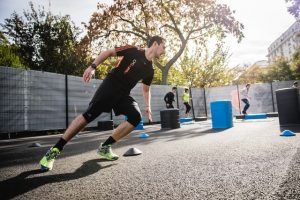 Who wouldn’t want to find workouts that burn 1000 calories? It would help speed up weight loss and get you in shape faster. While there are workouts that burn that many calories, it doesn’t happen for everyone doing them. The amount of calories burned is based on the person’s body build, the intensity of the workout and the number of calories it causes the body to burn after the workout, which is called afterburn. It increases metabolism for up to 72 hours after the workout is finished.
Who wouldn’t want to find workouts that burn 1000 calories? It would help speed up weight loss and get you in shape faster. While there are workouts that burn that many calories, it doesn’t happen for everyone doing them. The amount of calories burned is based on the person’s body build, the intensity of the workout and the number of calories it causes the body to burn after the workout, which is called afterburn. It increases metabolism for up to 72 hours after the workout is finished.
If you’re pushing it hard, you’ll burn more calories.
The intensity of your workout is so important when measuring calories burned. If you’re taking it slow and easy, even if you’re doing the exact exercise as someone else, you’ll burn fewer calories and take a lot more time. How calories burned are calculated is also important. If the amount of calories burned in five minutes is then multiplied by 12 to see how many are burned in an hour, it’s deceptive. You simply can’t go at peak intensity for that long, even if you were an Olympian athlete.
Body composition, age and gender are important factors.
The more muscle tissue you have, the more calories you’ll burn doing an exercise. Men tend to have more muscle mass, so they tend to burn more calories doing the same exercise a woman, even if they weighed the same and used the same intensity. The same is true of the age of the participant. The older you are, once you reach adulthood, the more you lose muscle mass. It’s all about hormones and hormone levels. It’s only natural that someone weighing 230 pounds will burn more calories than someone weighing 130 pounds. They have more weight to carry and move. A man weighing 185 pounds will burn 965 calories running for an hour, while a man weighing 125 pounds will only burn 652 calories.
So what are the most effective workouts?
Workouts that cause afterburn, extra calories burned after the workout is over to get the body back to normal, are the most effective. Doing a HIIT workout, for instance, will burn more calories. HIIT isn’t a particular exercise or group of exercises, but a way of modifying your intensity. You go at top intensity for a minute or two and then revert to moderate, recovery, intensity for the same amount of time or longer, volleying between the two continuously.
- Top calorie burning workouts include working out with kettlebells. Kettlebells work all parts of the body and address all types of fitness, strength, balance, flexibility and endurance.
- Exercises that use compound exercises also burn a lot more calories. Compound exercises work multiple joints and muscles at the same time. Some examples of compound exercises include the deadlift, push-ups and lunges.
- If you want to boost your calorie burning, no matter what exercise you do, you need to build more muscle mass. Strength-building exercises burn calories, plus build muscle mass.
- Losing weight and getting fit starts in the kitchen. A healthy diet is the key to weight loss. No matter how many calories you burn in one session, it takes consistency and a healthy diet to lose weight.
For more information, contact us today at LIV Fitness
Can Hormones Make You Gain Weight?
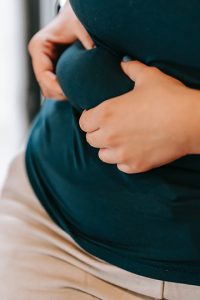 No matter where you live, Dublin, CA, Livermore or any other place on the earth, sometimes hormones get out of balance and that may cause you to gain weight. Of course, not all weight gain comes from hormonal imbalance. If you’re eating potato chips dipped in a big bowl of ice cream for snacks, that could be the cause of your problem. If, however, you’re sticking with a healthy diet and still packing on the pounds it may be hormones.
No matter where you live, Dublin, CA, Livermore or any other place on the earth, sometimes hormones get out of balance and that may cause you to gain weight. Of course, not all weight gain comes from hormonal imbalance. If you’re eating potato chips dipped in a big bowl of ice cream for snacks, that could be the cause of your problem. If, however, you’re sticking with a healthy diet and still packing on the pounds it may be hormones.
There are a lot of different types of hormones and many can play a role in weight gain.
Every cell in your body requires hormones to function. Hormones include more than just sex hormones like estrogen, progesterone and testosterone. Hormones deliver messages to all the cells in your body. They affect your mood, growth rate and even your immune system. They also affect where you store fat, weight loss and hunger. For instance, if you get too little sleep, your body makes more ghrelin, the hunger hormone and less leptin, the hormone that makes you feel full. Insulin is another hormone that affects your weight and insulin resistance can lead to weight gain in the abdomen and type 2 diabetes.
Are you under stress?
When you’re under stress, your body sends out hormones, such as cortisol, which prepare your body to fight or run. If you don’t those changes remain in place and cause serious conditions and even weight gain, particularly around the middle, belly fat. How do you counter that problem? It’s easier than you think. Start by mimicking the actions of fight or flight. Run, exercise and get active at high intensity. It burns off the hormones of stress, can help you lose belly fat and leaves you feeling fabulous. Cut out sugary products and highly processed food. Before you know it, you’ll be dropping pounds quickly.
It’s all about balance.
Hormones balance each other out. For every hormone that does one particular job in your body, such as increase your heart rate, there’s a hormone that does the opposite, such as slow your heart rate. The body is all about balance and systems that counter each other. If you have high levels of insulin that reduce sugar levels in your body, your levels of glucagon will be lower. When the insulin reduces the sugar in the blood, glucagon increases glucose to maintain a balance. High insulin levels increase fat fast
- Sex hormones determine where fat is stored, so an imbalance with higher levels of hormones like estrogen, will put weight on hips, thighs and abdomen. Dominance of any of the sex hormones can cause weight gain.
- Inflammation in the body can create hormone imbalance. Foods high in sugar and processed foods are inflammatory. They can lead to insulin resistance, oxidative stress and weight gain. Opt for whole foods, healthy fat and foods higher in protein to help eliminate the problem.
- Find ways to control stress. Strenuous exercise is one way, but you can also combine them with meditation, breathing techniques and other stress relievers like taking a walk or going outside in the sun.
- Get plenty of sleep. You need about 7-9 hours a night. Turn off any electronic devices and sleep in a cooler, dark room. Cut out caffeine. It will help keep your hunger hormones and stress hormones in check.
For more information, contact us today at LIV Fitness
How Many Grams Of Carbs Should I Have Daily?
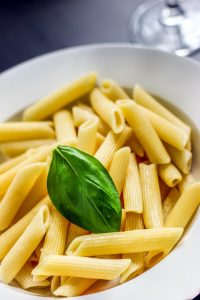 There are several low carb diets that are making their way to popularity. After all, who can resist a diet that encourages you to eat bacon. However, some people take it to extremes and try to cut out carbs altogether. Just how many grams of carbs, do you actually need daily and what happens when you get too little? First, let’s start by discussing how the amount of carbs is determined and what makes a low carb diet. The amount you require is based on the percentage of calories from carbs. For traditional diets, that amount is 45 to 65%. Low carb diets can be as low as 10% of your calories from carbs.
There are several low carb diets that are making their way to popularity. After all, who can resist a diet that encourages you to eat bacon. However, some people take it to extremes and try to cut out carbs altogether. Just how many grams of carbs, do you actually need daily and what happens when you get too little? First, let’s start by discussing how the amount of carbs is determined and what makes a low carb diet. The amount you require is based on the percentage of calories from carbs. For traditional diets, that amount is 45 to 65%. Low carb diets can be as low as 10% of your calories from carbs.
What is a carb?
Carb is a shortened version of the word carbohydrate. It’s a macronutrient like protein or fat. There are two types of carbs. The first is the simple carbohydrate, such as sugar, which digests quickly and sends blood sugar skyrocketing. The second group is complex carbs. These tend to be healthy options, like fruits and vegetables. Most carbs come from plant sources, but there are some animal sources, such as dairy. It’s the lactose, which is a sugar found in milk.
You can calculate the amount of carbs you’re eating by using math.
If you want a traditional diet, calculate your caloric intake and then cut it in half for a diet that’s 50% carbohydrates or multiply it by 0.65 for a diet that’s 65% carbohydrates. Then divide that number by four. Why do you use four? That’s the number of calories in one gram of carbohydrate. So if you’re using a diet that has 50% carbs and you’re eating 2000 calories a day, 1000 calories should come from carbs, which is 250 grams of carbs. On a very low carb KETO diet, only 10% of your calories would come from carbs, so that’s 200 calories and 50 grams of carbs.
If you’re going low carb, eat healthy carbs.
As David Carradine used to say in the Kung Fu TV series, “Choose wisely, Grasshopper,” especially, when it comes to eating carbs on a low carb diet. Carbs aren’t really the enemy of weight loss and you definitely need them in your diet because they’re loaded with nutrients like vitamins, minerals, phytonutrients and fiber. Choosing ones that are complex, like fruits and vegetables and avoiding simple carbs like sugar, which are empty calories, is the key.
- Each person will have a different carbohydrate gram intake, which is based on their overall calorie intake.
- If you aren’t sure how many grams of carbohydrates a food contains, it’s easiest to use a list that shows how many grams. For processed foods, always read the label to find how many grams per serving.
- Not only is sugar a carb you should avoid, so is white bread and food made with bleached flour. Choose whole grain option, not only for the nutrients, but also the fiber that slows the absorption of sugar into the bloodstream.
- If you have a high activity level, you need to increase your carbs to do your best. Otherwise, you’ll be depleting your energy and not functioning your best. Snack on a protein/carb combination before and after a workout.
For more information, contact us today at LIV Fitness
- « Previous Page
- 1
- …
- 5
- 6
- 7
- 8
- 9
- …
- 17
- Next Page »

